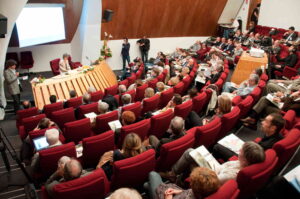PhD defense :
Mechanistic diversity and catalytic innovations in radical SAM enzymes : Discovery and characterization of two novel reactions
For more than two decades, the superfamily of S-adenosyl-L-methionine radical (radical SAM) enzymes has continued to astonish by the breadth and sophistication of the transformations it catalyzes. Ubiquitous across all domains of life, these enzymes harness radical chemistry to remodel, functionalize, or assemble a wide variety of biomolecules, including secondary metabolites, nucleic acids, proteins, and ribosomally derived peptides. Despite twenty years of intensive research, their architectural diversity and mechanistic versatility remain largely unexplored
In this context, we investigated two singular representatives that embody complementary facets of radical biochemistry. The first enzyme is characterized by a bimodular organization associating two distinct functional domains. This unprecedented architecture enables the combination of two paradoxical successive radical reactions, ultimately installing original post-translational modifications on a RiPP peptide.
Jury members:
- Nicolas ROUHIER, Professor, University of Lorraine – Reviewer & Examiner
- Pierre CROZET, Associate professor (HDR), Sorbonne University – Reviewer & Examiner
- Alessandra CARBONE, Professor, Sorbonne University – Examiner
- Benoît D’AUTRÉAUX, Research Director, INSERM (University Paris-Saclay) – Examiner
- Frédéric AVENIER, Professor, University Paris-Saclay – Examiner
- Sylvie LAUTRU, Research Director, CNRS (University Paris-Saclay) – Examiner
Directed by:
Olivier BERTEAU (Research Director, INRAE, ChemSyBio team) and Alhosna BENJDIA (Research Scientist, INRAE, ChemSyBio team)




